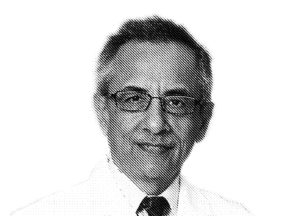
Emotional intelligence has been widely accepted as an important element of leadership. The seminal work of Daniel Goldman informs us that the education of leaders involves the four essentials of emotional and social intelligence (self-awareness, self-regulation, social awareness and social regulation). Grunberg and colleagues maintain that healthcare professionals must also gain these skills to lead others to counsel and treat patients, and assist with their physical and behavioral health.1
While the other three facets of emotional intelligence are often discussed, social regulation is often not mentioned in the literature. I have previously discussed self-imposed silence as one cause of burnout. Yet, of the four parts of social regulation, cognitive dissonance is of great importance for employed physicians dealing with burnout.
Cognitive dissonance was coined by psychologist Leon Festinger, who saw it as an attempt to be internally consistent. When we are not, we are psychologically distressed and experience cognitive dissonance.2 As a non-mental health professional, cognitive dissonance seems to me like a struggle between our cognition and our behavior. When I have been conflicted, I have experienced anxiety, mental tension and, occasionally, regret for having chosen a certain behavior. I have discovered that there were others like me who were self-aware but lacked understanding of the science behind the concept. “Cognitive dissonance is ever-present in both the smallest, simplest examples to the deepest layers of humanity that impact the way we interact with each other and view ourselves and the world,” according to Lawlor.3 Stress results when the dissonance occurs frequently, for long periods of time and “involve[s] difficult decisions and a commitment to action.”4
Now, to a couple of examples. One of my own personal life rules has been to avoid participating in fundraisers, and asking friends and colleagues for money. When I volunteered for an anti-domestic violence organization, and then became an officer, I was expected to raise money. The prospect of going “begging,” as I perceived it, was distasteful. Though many friends, relatives and colleagues obliged, the discomfort dogged me throughout. I have been a strong and sometimes partisan advocate for physicians throughout my career. When I was appointed to the board of a large healthcare system, I was advised that I had a “fiduciary” duty to represent the board rather than physicians. I sensed that physicians were expected to mostly watch, listen and stay silent.
In contrast, the medical staff expected me to represent their views. I did speak out at several critical junctures representing physicians’ views, but sadly not enough. In four years on the board, I felt bottled up inside. I tried to deal with this by “buttonholing” individual lay board members to better explain our perspective.
Clinical practice also involves some degree of cognitive dissonance, even if we are following our internal ethical voice. An example often cited is that in evidence after research showed no benefit with arthroscopy for osteoarthritis of the knee. The surgeon is wrestling with the cognitive part related to the new research versus the firm belief hundreds of patients were helped (confirmatory bias). This is different from misrepresentation. We may overestimate the positive side of our decisions, justify sub-optimal outcomes, or be reluctant to admit that the benchmark outcomes reported are better.
Physician-leaders can often have two different views of an issue—one for the outside world and one for themselves. As an example, some leaders may not act when they have publicly-stated support for a position, such as advocating for more resources. This duality may be appropriate at times, or seen as hypocritical. Can a leader in this position preserve their integrity and resolve the dissonance?
By recognizing the dissonance, we are provided with an opportunity to clarify our principles and beliefs, and then to decide on a course of action. Some may resolve the dissonance by distorting their cognition through self-justification.5 The leader can either change his or her belief system, or change the action to resolve the dissonance. When neither is possible, they may justify their action. The bottom line is that self-awareness is important in this regard.
Batista advises that, first, we should expect cognitive dissonance with important executive or managerial roles.5 Festinger opines that we either avoid situations that create the dissonance, or recognize it, try to reduce dissonance, and attain consonance to feel more comfortable. Third, we should recognize the stress that the dissonance will create, and have mechanisms ready to deal with it. Finally, good leaders always have trusted advisers, a coach, or a small kitchen cabinet to help settle internal conflict. Self-awareness and understanding of cognitive dissonance also need to be taught in training programs.
References
- Grunberg NE, McManigle JE, Barry ES. Using Social Psychology Principles to Develop Emotionally Intelligent Healthcare Leaders. Front. Psychol., 29 July 2020 | https://doi.org/10.3389/fpsyg.2020.01917)
- Festinger, L. (1957). “An Introduction to the theory of dissonance,” in A Theory of Cognitive Dissonance, ed. L. Festinger (Stanford, CA: Stanford University Press), 209–219.
- Lawler M. Cognitive Dissonance: The Theory, Real-Life Examples, and How It Affects Your Day-to-Day Life. https://www.everydayhealth.com/cognitive-dissonance/
- Jones EH et al (2015) Action-Based Model of Cognitive Dissonance Processes, page 185, Current Directions in Psychological Science.
- Battista E. The Cognitive Dissonance of the CEO. https://www.edbatista.com/2018/07/the-cognitive-dissonance-of-the-ceo.html.













Cognitive dissonance is a new term to me. But it is familiar situation, lack of which causes psychological distress is common among the physicians.
I believe it may be more common among the hospital based specialities due to lack of job satisfaction of not having a clinical relationship with the patient.